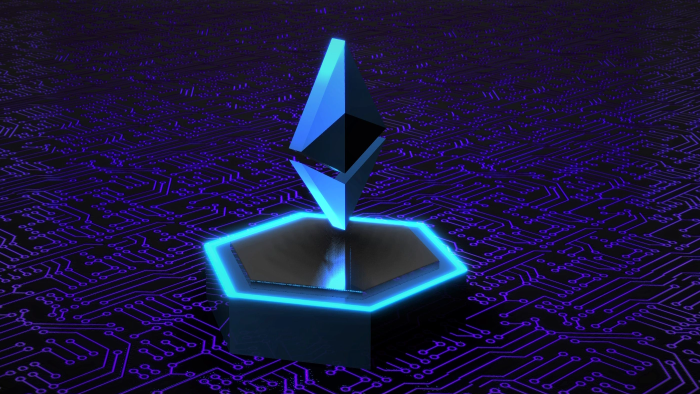When Bitcoin was created as a decentralised and automated form of currency using Blockchain technology, different computer programmers discovered the potential for decentralising systems other than money. They discovered that applications and platforms might be decentralised to create a safer and more secure ecosystem, which led to the introduction of the Ethereum blockchain, A protocol that facilitates the creation of decentralised applications (dApps) and much more.

Smart contracts were introduced to the Ethereum blockchain to strengthen decentralisation and autonomous execution. It is the first blockchain that can be programmed, allowing developers to create applications for any given use case.
About Ethereum Blockchain
Ethereum is a global, open-source platform for decentralised applications, as defined by the platform. On Ethereum, it is possible to develop code that controls digital currency, executes precisely as programmed, and is accessible from anywhere.
Ethereum employs the Solidity programming language, and its native cryptocurrency is Ether (ETH).
Architecture
Ethereum operates through the following facets:
1. Smart contracts using Ethereum
Ethereum added smart contracts to the blockchain, which subsequently became irreversible. It uses mathematical codes to initiate contracts between two parties decentralised from a central authority. These contracts automatically perform a predetermined function when a predefined condition is met. They are trustworthy, traceable, and irreversible, so preventing human error.
2. Ethereum Virtual Machine (EVM)
Ethereum Virtual Machine carries out smart contract execution on Ethereum. It is an isolated machine that cannot access Ethereum’s code base, including files and processes.
The EVM is sent Solidity-written smart contracts to interpret and execute. It permits developers to utilise any programming language of their choosing. Moreover, as a Turing complete system, it will provide an answer when questioned.
Conformity Mechanism
To authenticate the authenticity of a transaction, Ethereum employs the same Proof-of-Work consensus process as Bitcoin’s blockchain. To generate newer blocks, miners must compete to solve complicated mathematical challenges. The first individual to solve the puzzle will be able to add bricks and receive Ether as compensation.
Security
As miners are supposed to solve the block nonce faster than anyone else, it is nearly impossible for them to construct new blocks that remove transactions, generate fraudulent ones, or build a second chain within the Proof-of-Work mechanism of Ethereum. To consistently generate malicious but authentic blocks, you must own over 51% of the network’s mining power in order to dominate the competition, which takes a significant amount of computational power. Moreover, the potential loss may outweigh the potential gain.
Technical Designing
The Ethereum foundation envisioned Ethereum as a decentralised computing platform that enables the creation, storage, and execution of dApps based on smart contracts.
A decentralised peer-to-peer (P2P) network of Ethereum clients representing network nodes. A client of Ethereum may be any node that verifies new transactions, implements smart contracts, and contributes new blocks to the blockchain. It can be thought of as an enclave residing on thousands of machines connected via the Ethereum P2P network. To execute smart contracts, the enclaved network is the EVM and runtime environment of the P2P network.
The Ethereum Virtual Machine (EVM) is operated by Ethereum clients, which can be written in any popular programming language. Ethereum clients offer a set of web3 APIs through JSON-RPC for dApps that interact with the Ethereum blockchain. Use the web3 object provided by the web3.js framework to communicate with the Ethereum network from your web or wallet application. It is compatible with all clients of Ethereum. It communicates with a local or remote Ethereum node and makes backend RPC calls.
To decentralised applications, the Ethereum network resembles a large global computer comprised of thousands of distributed processing processors. Once linked to the internet, it is possible to interact with any node in the distributed system.
Founders of Ethereum Blockchain
Ethereum was founded by the Russian-Canadian programmer Vitalik Buterin. The Ethereum white paper was published in 2014, and the project was initiated in 2015. The Ethereum co-founders include:
Mihai Alisie
Stephen Di Iorio
The author Amir Chetrit
Charles Hoskinson
Michael Wood
William Wilcke
Joseph Lubin
Popular Use Cases
Decentralized Finance (DeFi) – Ethereum is the pioneer of DeFi, where transactions may be conducted from anywhere in the globe without the need for an intermediary. Ethereum DeFi enables borrowing funds, token trading, fund-raising, and more.
NFT – Currently trending, NFT is one of Ethereum’s most important use cases. NFTs can only have one legitimate owner at a time, and the Ethereum blockchain totally safeguards them. The Ethereum network prevents ownership modification and duplication.
Decentralized Autonomous Organizations (DAO) – It is a blockchain-based community without centralised leadership. Everything in DAO, including fund administration and money movement, is managed by DAO algorithms that provide a transparent and tamper-resistant environment.
Other Information
Ethereum 2.0 is anticipated to introduce a version that is more scalable, secure, and sustainable. It will be modified functionally to operate at three levels.
Main Chain: The initial blockchain of Ethereum.
Beacon Chain: It provides a Proof-of-Stake consensus method for block validation and overall coordination.
Shard Chain: Shard Chain attempts to expand Ethereum’s capability for transaction processing and data storage.
The Proof-of-Stake consensus mechanism will be utilised to achieve scalability and sustainability. Ethereum 2.0 will potentially handle more than a thousand transactions per second, making it a speedier and less expensive ecosystem.
Check Ethereum Review and Rating to read more.


